 Companies who get scant attention in the marketplace despite strong products can probably relate to Rodney Dangerfield’s signature, if grammatically flawed lament: “I don’t get no respect.” Unable to attract adequate consumer attention for their branded products, such companies often turn to negative advertising, mocking competitors’ products — or even worse — their customers. That is, they try to level the playing field by smacking down others rather than building themselves up. Samsung provides a recent example of this approach. Three months prior to the US launch of Apple’s iPhone 5 (September 21, 2012), Samsung had launched its own top-of-the line smartphone, the Galaxy S3, which included numerous features that the iPhone 5 would lack. Yet most of the press buzz and customer interest remained focused on the breathlessly anticipated iPhone 5 sales launch. To dramatize this perceived injustice, Samsung ran this television spot in which a mob of faux sophisticate, Apple enthusiasts kill time while waiting for the Apple store opening by babbling platitudes about rumored iPhone 5 features. For example, one customer asks (with a look of bewildered awe): “I heard the connector is all digital! What does that even mean?” This is mockery in high art form! It’s hard to gauge the impact of an ad campaign, but Apple went on to an all-time smartphone sales record with the iPhone 5, so obviously Samsung didn’t deter too many Apple enthusiasts from buying the object of their desire. But Samsung Galaxy S3 sales were also reasonably strong and Samsung repeated the same advertising tactic in advance of Apple’s subsequent smartphone launch — the Apple 5s/5c — (preceded five months earlier by the Samsung Galaxy S4). Not to be outdone, Nokia responded to all the fuss with an ad promoting its Lumina smartphone, mocking customers for their fealty to either Apple or Samsung products. So what are we to make of ads which mock competitors’ customers? Do they work? And even if so, are there downsides? The short answer is, mockery is no substitute for the need to establish a company’s own brand persona, and mocking the very customers you hope to attract can be viewed as petulant and snarky, further eroding an already weak brand. It should be crystal clear what types of situations motivate such tactics. Advertising mockery is utilized by companies with weak sales positions and/or brand images, who find themselves way behind market leaders with little perceived prospect of making inroads with traditional and more genteel advertising messages. So the most benign view of such tactics is that they attempt to shake prospective customers out of their comfort zones to think about a challenger company’s products in a new light. Fair enough. The foundation of strong brands But how did the targets of such advertising campaigns achieve their strong brand images in the first place? Successful brands are built on three foundations:
The corollary of course is that in order to maintain a strong brand, companies need to meet or exceed established expectations with each new product release. In this regard, Apple would be foolhardy to rush a new product to market just to incorporate a new feature or tool, without taking the time to refine the overall design, UI, build quality and performance to expected high standards. Apple has made and kept its brand promise of refined innovation to consumers over multiple generations of new products — the legacy of Steve Jobs. Strong brands also convey mutual trust. Loyal customers trust their preferred company to consistently deliver appealing products, while the company trusts the that its targeted customers will remain loyal as long as their needs are well met. Are there technophiles or early adopters that may abandon a current product the instant a new feature is offered by a competitor? Sure, but these customers are inherently disloyal to any brand and not worthy of a company’s pursuit, particularly if it means breaking the brand promise to core customers. If assiduously maintained, the mutual trust between a customer and her preferred brand is difficult for competitors to dislodge. Finally, strong brands provide comfort to consumers in reinforcing their symbolic identity, signaling membership in a desired social grouping. For example, it’s hard to imagine a bunch of hard-drinking, über football fan guys gathering around a big screen TV on a Sunday afternoon pounding down Amstel Light® beers with Kashi® Granola & Flax Seed Bars. Wrong symbolic identity for this gang! Any advertisement that makes heavy use of lifestyle images– and there are tons — is making a play to reach customers through symbolic identity. Product placement on popular TV shows is another technique towards this end. Luxury brands have long thrived on symbolic identity to exploit some consumers’ high willingness to pay for premium branded products that showcase their taste and wealth. Would a satisfied Luis Vuitton customer jump ship to a new brand which promised to deliver a stronger handbag zipper design? Unlikely. Relatedly, strong brands evoke strong emotional associations and imagery. For example, when I asked my MBA students to explain why they preferred their favorite brands, the answers were often grounded in highly emotive reactions. Some students were “inspired” by what Dove or Nike products stood for. Another admired Luis Vuitton for its ability to “deliver a transporting emotional experience.” And yet another relished Dunkin’ Donuts for providing “the same kiddy excitement whenever I grab a cup!” Thus strong brands impose high emotive switching costs. Challenger brands need to instill their own promise, sense of symbolic identity and mutual trust to dislodge brand leaders. At best, negative ads may be necessary, but they are definitely not sufficient for a weak challenger to build their own strong brand. Case in point: Subaru’s brand rebirth Subaru is a company on a roll. US sales in 2013 were well over 400,000 vehicles, setting a fifth straight annual sales record. Consumer Reports recently named Subaru the second best brand in the US (just behind Lexus), and the company confidently promoted its vehicles under the tag lines: “Confidence in Motion” and “Love: It’s What Make’s a Subaru a Subaru!” But it wasn’t always this way. In 1991 Subaru of America was on the ropes, with an operating income margin of negative 25% on sales of ~$1 billion. Their cars lagged far behind Toyota and Honda in brand strength, sales and price realization. With bankruptcy looming, Subaru’s ad agency, Wieden & Kennedy — best known for its Nike account — recommended that Subaru get snarky in negative ads against its stronger rivals. Subaru’s early-1990’s ad campaign openly mocked customers of its stronger rivals. One ad opened with the admonition: “A car is a car; it won’t make you handsomer or prettier and if it improves your standing with the neighbors, then you live amongst snobs.” A second ad, mockingly asserted that “a luxury car says a lot about its owner,” followed by head shots of officious-looking customers intoning what their car means to them, e.g.:
What’s ironic is that Subaru actually did have a highly distinctive product line — or at least half of their cars fit this description. Specifically, Subaru was one of only two companies (Audi was the other) that sold all-wheel drive (AWD) cars at the time. These vehicles delivered superior traction and handling, particularly in adverse weather conditions, and served as a source of highly tangible competitive differentiation from mainstream market offerings. But rather than make its AWD product distinctiveness the centerpiece of its brand “promise,” Subaru heavily promoted its less expensive front-wheel drive models which competed head-to-head with Toyota and Honda at a considerable disadvantage. Subaru’s mocking negative ad campaign only made a bad situation worse. Saving Subaru How did Subaru go from the brink of bankruptcy to becoming the fastest growing car company in the US? They completely redefined their brand around a highly differentiated, compelling consumer value proposition, and supported the repositioning with a credible, appealing marketing campaign that created a strong symbolic identity for a growing segment of customers. Here how:
Ironically, with their ill-considered mocking ad campaigns long behind them, Subaru returned to negative advertising in a 2011 with their humorous “Mediocrity” spots. In this campaign (thinly disguised as directed against Korean car company competition), ad spokespeople promote the faux benefits of a blandly styled, taupe-colored fictitious sedan called the “Mediocrity.” In one ad, a bland looking mother in a taupe blouse seated in front of her taupe Mediocrity says: “we’ve got two kids and a dog, so the last thing my family needs is more excitement when we drive!” In the same ad, a bland looking spokesman (in a taupe suit of course) pulls a sheet off a new taupe Mediocrity, intoning: “Introducing the 2011 Mediocrity; a car so basic, so understated, you’ll never have to worry about your blood circulating too quickly.” The difference between Subaru’s negative ads of the early 1990’s and the reprise twenty years later is in tone and intent. The snarky and derisive “A Car is Just A Car” campaign attempted to tear down the legitimacy of stronger competitors at a time when Subaru didn’t think it had much positive to say about itself. In contrast, the “Mediocrity” campaign used light-hearted humor to reinforce Subaru’s brand distinctiveness against less differentiated competitors. The first ad campaign made you wince; the latter induced chuckles.  Even Apple has played the game It’s interesting to note that one of the most extensive negative ad campaign ever was run by a company with perhaps the strongest brand image in the world. Between 2006 and 2009, Apple ran 66 TV spots under the banner “Get a Mac”. In these ads, a hip-looking young man assumes the role of a McIntosh computer in repartee with a pudgy, nerdy-looking guy symbolizing a Windows PC. With quips, barbs, sight gags, and one-liners, the PC is repeatedly portrayed as inferior to the Mac, but the PC-guy gets most of the joke lines, and viewers are led to feel more sympathy than pity for the PC guy. Apple used jocularity, not derision to make its points. Throughout this period, Apple’s US personal computer market share remained mired around 7.5%.
So do negative ads which poke fun at competitors’ customers work?
0 Comments
A recurring theme in my MBA course on business strategy this semester was courage. Executives need courage to create breakaway products that offer consumers a compelling value proposition in ways that are meaningfully different from competition. Such executives are not afraid to break from competitive norms; to go beyond the safe boundaries of incremental improvements. Think Tesla, Post-It Notes, Swiffer and Ikea. And executives also need courage to go all-in in ensuring that the company’s resources, assets and management incentives are fully aligned to support the breakaway strategy. Such executives become personally vested in, and identified with their business strategy, earning justified glory or job-ending rebuke, depending on outcomes. Think Nicolas Hayek at Swatch, Steve Jobs (second time around) at Apple and Dave Barger at jetBlue. The products and executives cited above provide inspirational stories of creative leadership, driven by leaders who live by the credo of “no guts, no glory.” But what are the implications for MBA graduates most of whom are about to enter the corporate workforce in entry level positions? They are not initially in a position to exert courageous leadership. Or are they? A guest speaker in my class near the end of the semester — entrepreneur, author, blogger Seth Godin — urged my students to approach their first (and every) job with the mindset to “make a ruckus” and “don’t be afraid to be fired.” In short, Godin was rendering themes from my course in very personal terms. Customer centricity and playing to win (as opposed to playing not to lose) are not just mantras for corporate leaders, but a code for all to live by. Now it’s easy for financially secure elders like Godin and myself to proselytize a message of personal leadership, driven by the principles of effective strategy without fear of rocking the boat. But what if you’re just feeling your way around a new job in a new company whose paycheck is critical to repairing your post-MBA balance sheet? How and where do you draw the line between pushing for constructive change and being a good team player in supporting your company’s current business direction? My short answer is there is no hard line, it’s a decidedly personal decision, but nevercompromise being honest with yourself about what you’re doing and why. It’s quite natural for students to approach their first post-MBA job with a combination of optimism and excitement. But once on board, what would you do if you find yourself becoming concerned and ultimately convinced that your company is headed in the wrong direction? You have three choices:
Here’s a hypothetical example to put this question to the test. Suppose you accept the premise that strategy should be formulated from an “outside-in” perspective — that is, the highest priority being to create and consistently deliver a compelling consumer value proposition. Internal capabilities, incentives and corporate policies should be aligned and managed towards supporting this end. That all sounds reasonable enough, but the reality is that companies vary widely in their commitment to operate in such a fashion. Watch what companies do, not what they say. Every company says that they value their customers, but there is a wide variance in perceived customer satisfaction across industries to suggest otherwise. For example, the exhibit below displays 2013 results from ACSI, a spinout from the University of Michigan, on customer satisfaction by industry on a 0-100 index scale. You probably shouldn’t be surprised to see that companies in the red zone — broadband/ISPs (e.g. Comcast), subscription television (e.g. Time Warner), airlines (e.g. United) and wireless telephone providers (e.g. AT&T Mobility) score quite poorly in delivering an appealing customer experience. There are a few bright spots (e.g. jetBlue), but by and large, companies in these industries have knowingly implemented business practices that extract revenue in ways that aggravate their customers. Now suppose you were hired in as a freshly minted MBA to manage Policy Assessment and Strategy for the Customer Service Group of one of the lower performing companies in one of these industries. After a few months into the job, with due diligence under your belt from proprietary company surveys, auditing customer service calls and internal management interviews, you report your initial findings to your boss. For starters, you confidently summarize what you believe to be the root causes of your company’s chronically poor customer satisfaction performance:
With MBA case studies still fresh in your mind on the success of truly customer-centric companies, you object, noting that focusing only on post-transaction customer complaints is inherently self-limiting and will ultimately reduce lifetime customer value. But your boss adamantly asserts that corporate management is well aware of the frequency and source of complaints received by customer service, and “they’ve done their homework to determine the profit-maximizing business model.” You’re tempted to press further — questioning the time frame for the analysis, or whether customer churn impacts have been fully incorporated in the analysis — but your boss’ mien signals this conversation is over, at least for now. So now what? You’ve essentially been asked to put lipstick on a pig, whose behavior is largely outside your control. You hopefully should get the opportunity to revisit your company’s broader business strategy questions, after having more time to gather evidence, to substantiate your recommendations and to get more savvy about internal politics. But the the possibility — and likelihood, given your current position in the company — still remains that you will be unable to instigate a personally satisfying course correction in the company’s strategy. Let’s say you’ve been at it for sixteen months, and it’s time to revisit doors #1, #2 and #3. In 512 BC or thereabouts, the venerable Chinese general, Sun Tzu wrote The Art of War in which he proffered the following advice on military strategy: The highest form of generalship is to balk the enemy’s plans…the next best is to attack the enemy’s army in the field; and the worst policy of all is to besiege walled cities. Sun Tzu’s advice applies equally well in business, as disruptive new ventures are well advised not to initiate an all out war aimed at taking over incumbent market leaders’ core markets– their “walled cities.” Sebastian Thrun, the self-declared father of the modern movement to disrupt higher education with Massive Open Online Courses — aka MOOCs — has learned this lesson well. And therein lies an instructive tale. For those unfamiliar with this space, prior to 2011, Thrun was a tenured professor at Stanford University who taught one of the most popular computer science courses on campus, routinely packing his lecture hall with 200 students. But after hearing Salman Khan’s inspiring TED talk in March, 2011, Thrun reckoned that he could reach a far larger global audience by transforming his course to video format. He set out to convert his popular Stanford course to online delivery which initially featured videos produced with nothing more than a camera, a pen, and a napkin. Despite the low initial production quality, many of his 200 Stanford students chose to switch to his video version because they could absorb the material at their own pace and on their own schedule. Eventually, the 200 student classroom dwindled to a group of 30. Meanwhile, the course’s popularity exploded online. Within two weeks of its announcement, 56,000 students from around the world had enrolled, swelling to 160,000 by the start of the virtual semester — more students than Thrun could reach in his physical classroom in 800 years. The initial experience convinced Thrun that he could craft an even better course with interactive Web tools that adequately recreated the intimacy of one-on-one tutoring. The student value proposition seemed compelling: one of the best professors from one of the best universities teaching one of the most popular courses on his very best day (Thrun re-taped his lecture modules until perfected) — all for free! The audacity (root for the venture’s ultimate name) and potentially vast scale of the endeavor — along with a dash of founder hubris — prompted Thrun to leave the comfort and prestige of his tenured position at Stanford. Thrun launchedUdacity with a $5 million Series A investment from Charles River Ventures and $300,000 of his own money. In response to its extraordinarily successful launch — at least as measured by student enrollments — Udacity rapidly expanded its online course offerings, and was soon joined in this space by a similar and even larger Stanford spinoff venture — Coursera — as well as by edX, a MOOC joint venture between MIT and Harvard. Collectively, the Big 3 MOOCs soon attracted >3 million course enrollments and over $100 million in venture investment. As these new ventures entered their second year of operation, despite the lack of a clear sense of how they would convert eyeballs to dollars, it was hard to not get swept up in the noble aspiration to democratize the availability of first rate education to every citizen of the world within reach of a computer and a broadband network. Thrun was one of the most vocal MOOC proselytizers, explaining his decision to leave traditional academia in January 2012 by saying: I can’t teach at Stanford again, I feel like there’s a red pill and a blue pill. And you can take the blue pill and go back to your classroom and lecture your students. But I’ve taken the red pill. I’ve seen Wonderland.” At the same time, Thrun also boldly predicted that Udacity would profoundly disrupt the traditional university system, noting: In 50 years, there will be only ten institutions in the world delivering higher education and Udacity has a shot at being one of them.” In essence, Thrun was declaring disruptive war on the walled cities of established universities, threatening a technological revolution that would blow up a number of cherished institutions and traditions. Sacré bleu, could it really be that the grandchildren of today’s college students would no longer see ivy covered buildings adorned with honorific statues and gargoyles, large lecture halls filled with a mix of fascinated and napping students, tenured academic faculty pontificating on arcane research topics, guy- and gal-watching on manicured quad lawns and game day mania at college football and basketball games?! Not so fast! But less than two years after his bold pronouncement on the impending death of higher education as we know it, a discouraged Sebastion Thrun downgraded his messianic view and hyperbolic enthusiasm by noting: I’d aspired to give people a profound education–to teach them something substantial, but the data was at odds with this idea. We were on the front pages of newspapers and magazines, and at the same time, I was realizing, we don’t educate people as others wished, or as I wished. We have a lousy product. What precipitated such a dramatic fall from grace? For one thing, Thrun and his fellow MOOC pioneers were undoubtedly troubled by stubbornly low student completion rates, which continued to hover in single digits for most courses, despite multiple attempts to improve pedagogy and student engagement. Then too, the path to profitability — at least for the VC-backed, for-profit ventures, Udacity and Coursera — remained cloudy. Simply throwing more free courses from more universities on a MOOC platform appeared unlikely to yield a viable investment return, notwithstanding attempts to add “freemium” services such as test validation, completion certificates and recruiting data services. But perhaps the most bitter disappointment for Udacity was its widely noted failure in a pilot program to replace in-class education at San Jose State University in California. In late 2012, Thrun proposed a partnership to California Governor Jerry Brown, who had been struggling to cope with rising tuition costs, poor student performance, and overcrowding in state universities. At a press conference the following January, Brown and Thrun announced that Udacity would open online enrollment in three subjects–remedial math, college algebra, and elementary statistics–that would count toward credit at San Jose State University, a 30,000-student public institution. Courses were offered for $150 each, and students were drawn from lower-income neighborhood high schools and the members of SJSU’s student body for whom there was no space in conventional classrooms. The pilot’s target students were struggling to keep up with requisite levels of educational achievement, prompting Thrun to declare at a press conference: A lot of these failures are avoidable. I would love to set these students up for success, not for failure. But when test results from the first pilot courses came out, it was clear that Udacity’s online courses failed to deliver acceptable results. In particular, it was found that 74 percent or more of the students in comparable classroom courses passed, while no more than 51 percent of Udacity students passed any of the three online courses offered. Notwithstanding the fact that this initial pilot targeted a particularly challenging student population — which in retrospect was ill-advised for a venture at such a primitive state of development — adverse publicity led to a temporary suspension of the Udacity online course experiment. Critics — and there had been many all along the way — cheered Thrun’s comeuppance. Some declared that the poor pilot performance was “predictable” while others lamented the “immorality” of public funds being used to pay a for-profit company to experiment on students with an unproven new approach to higher education. Academics’ schadenfreude was understandable payback for Thrun’s hyperbolic zeal in promoting the pilot program, and many were quick to claim victory against Thrun’s unsuccessful attempt to invade their university walled city. Immoral experimentation? But if Thrun’s victory laps were premature, so were critics’ condemnations. There are so many things wrong with such quick and sweeping condemnations of Udacity’s approach, intent and even morality that’s is difficult to know where to start. But as this debate gets to the heart of the future of higher education, it is important to set down some markers. Experimentation and fast learning from failure lies at the very heart of technological progress, so drawing sweeping conclusions from an initial pilot test demonstrates a self-serving lack of understanding of how innovation works. As an analogy, I would hope we wouldn’t suspend research on all cures for cancer because an initial clinical trial regrettably failed to save the lives of some terminally ill patients. Lest this sound like a deliberately draconian analogy, it is important to note that what compelled Governor Brown to seek out experimentation in this case was his recognition that California had neither the budget nor the resources to adequately educate the state’s young adults, particularly the most vulnerable students requiring remedial attention. Despite the fact that state education expenditures per capita had increased by nearly 25% over the past decade, too many young adults were failing to receive the education required to live a fulfilling, productive life. Under the circumstances, those who so swiftly and harshly condemned the search for new solutions to a chronic and worsening education problem in California should reexamine the logic of simply throwing more money at a system that was not able to deliver acceptable results. As it turns out, after a two month hiatus, Udacity’s online courses returned for a second semester, with dramatically better results. As noted in the table below, for some courses, online learning achieved better outcomes than traditional classroom formats (at a fraction of the cost). Whether this is the result of a significantly different student sample or due to improvements made in course design between the two trials is unclear. But that’s exactly the point. We need continuous disciplined experimentation to determine the most cost effective approaches to higher education. And we should learn from, not condemn inevitable setbacks along the way. Looking more broadly beyond the San Jose experiment, it is important to recognize that the higher education model in the US is broken and will be disrupted by Udacity or others committed to find more cost effective mechanisms to deliver higher quality, more relevant higher education. To substantiate this assertion, let’s start by observing that higher education meets all of the conditions that measure the vulnerability of any industry to disruptive transformation. The fourth point on this list is worth noting. In my business strategy course at a Tier 1 university, I often ask my MBA students to cite some examples of the greatest technological breakthroughs in human history. Common responses include the wheel (big improvement!), the printing press, electricity and, for those with shorter memories, the iPhone. Then, as I stand before a blackboard poised to record the answers, I ask my students to cite the biggest technological leaps in the history of education. But this question usually stumps the audience, drawing only tepid responses including “chalk” and “Powerpoint”. Hardly the stuff of technological revolution! Indeed the structural characteristics of my class (if not the caliber of teaching) differs little from the great Socrates — a predecessor of Sun Tzu. We both gather a limited number of pre-selected students — he under a tree, and me in a classroom — to engage in an inherently labor intensive dialogue aimed at imparting knowledge, judgment and critical thinking. When an instructor is talented and students are engaged, this method works quite well. However there are inevitable drawbacks to this time-honored approach: inherently high cost, inflexibility (requiring students to metaphorically “gather under a tree”), and a chronic dearth of talented teachers. This last point is worth stressing. Despite the widely reported increase in the costs of delivering higher education, many scholars — for example Clay Christensen andRichard Arum — have also documented declines in student learning outcomes, notably college graduates’ critical thinking and writing skills. In short, we’re paying considerably more for and getting less from higher education. Is there something about education that makes it uniquely immune to technological progress? Defenders of the status quo would say yes, pointing to the numerous past failures of communication technology breakthroughs — movies, radio, television and the Internet — to live up to lofty claims of changing education forever. So why should we believe that MOOCs — or whatever else you choose to call emerging online education formats — will be different this time? New York Times columnist Thomas Friedman perhaps answered this question best when he said: Big breakthroughs happen when what is suddenly possible meets what is desperately necessary What makes disruption of higher education “suddenly possible” is the confluence of four emerging technologies:
As for the second half of Friedman’s prediction, there should be little doubt in the “desperate necessity” to reform higher education in the US. Recent trends are more than discouraging, as noted below. These points are beginning to take a toll. From 2010 through 2012, freshman enrollment at more than a quarter of U.S. private four-year colleges declined 10 percent or more, according to a recent analysis by The Wall Street Journal. Perhaps the most compelling evidence of the inevitability of disruptive change to higher education is captured in the chart below displaying the growing gap between tuition costs and college graduate starting salaries. As NYU professor Clay Shirkey has bitingly noted: The value of a college degree remains high in relative terms, but only because people with bachelor’s degrees have seen their incomes shrink less over the last few years than people who don’t have them. ‘Give us hundreds of thousands of dollars and years of your life so you can suffer less than your peers’ isn’t much of a value proposition. More like a ransom note, really. So the question is only when, not whether new approaches to higher education deliver more effective and more relevant learning outcomes at lower cost. Udacity’s pivot In August, 2013, Udacity announced it was changing its business model, from offering an eclectic array of massive open online courses for free, to contractual arrangements with major corporations to produce targeted skill-building courses primarily aimed at prospective and current high tech employees on a fee-per-course basis. The new strategy had two important initiatives:
Well, there it is folks. After two years of hype, breathless proclamations about how Udacity will transform higher education, Silicon Valley blindness to existing learning research, and numerous articles/interviews featuring Sebastian Thrun, Udacity has failed. I strongly disagree with this conclusion, not borne out of a strong conviction that Thrun will succeed (he well may not), but because this condemnation is intellectually flawed in two important respects:
Business plan pivots reflect a logical and necessary evolution in developing successful businesses as the following examples attest:
After two years of operation, Udacity undoubtedly came to the conclusion that its initial MOOC business model offered very little promise of financial viability. The company always knew thatfree is not a business model, but it also discovered that secondary sources of “freemium” revenues were unlikely to offset the high development costs of online education. Thrun’s pivot puts Udacity in a better position to disrupt higher eduction than its initial positioning. Why? Because instead of trying to outdo universities at their own game — that is, delivering a wide array of college courses — Udacity has shifted to focus on a job that higher education institutions have traditionally largely shunned: corporate training. And in so doing, Udacity now threatens to break down a major pillar propping up the current business model of higher education — thereby “balking their plans,” as Sun-Tzu said millennia ago. Recall that the (weakening) justification for traditional college education has historically the attractive returns from higher lifetime earnings. But Udacity’s new focus threatens to profoundly undermine this rationale. If employers experience positive results in hiring high tech employees who have acquired superior job skills from Udacity’s new low cost training initiatives, student interest in attending, and employer interest in recruiting from many conventional institutions of higher education will decline. Udacity is trying to bridge a serious gap in our higher education system: the disheartening disconnect between college graduates’ growing difficulty in finding emotionally and financially satisfying jobs at the same time that employers chronically complain they can’t find enough qualified employees amongst the ranks of recent college graduates. According to a recent study from McKinsey, while 72 percent of educational institutions believe recent graduates are ready for work, only 42 percent of employers agree. There appears to be an equally large disconnect between college administrators and the general population on how well colleges prepare students for their careers. This is the gap that Udacity is now trying to close. It is far too early to tell how Udacity will fare, as its new partnership programs have yet to be fully implemented. But a few early indicators should be taken very seriously by academic leaders of our current higher education institutions:
It is dismaying to see so many academics rushing to dismiss innovative initiatives which seek to improve our higher education system. Resistance from incumbent stakeholders will eventually be overcome by three large and powerful constituencies poorly served by today’s status quo: the 70% of US adults who do not have a college degree, the majority of college graduates who are dissatisfied with the value of their degrees and the large number of employers challenged by a skills gap in the recruiting marketplace. The economic potential that can be unlocked by better serving these large constituencies will continue to attract investment in alternative education delivery models from both the private and public sector. Higher education institutions can no longer ignore their imperative to do a far better job preparing students for more demanding and fast-changing careers. While the hubris and hyperbole of some high tech zealots have been admittedly grating, hopefully, leaders of higher education institutions now recognize that the question is no longer whether, but only how and when disruptive technologies will reshape higher educational delivery models. As in any disrupted industry, the speed with which disruption occurs will vary widely across the higher education landscape. Many smaller colleges that rely almost entirely on tuition revenue are already facing severe financial distress. But no institution should feel immune from the disruptive forces at play, including the most highly endowed Tier 1 universities. My advice to academic leaders would be to commit to two inter-related strategic imperatives.
History is littered with examples of industries that, at their peril, failed to respond – or even to notice – changes in the world around them from railroads to steel manufacturers. Without serious self-examination and reform, institutions of higher education risk falling into the same trap, seeing their market share substantially reduced and their services increasingly characterized by obsolescence. And the second piece of advice comes from Reid Hastings, CEO of Netflix who knows a thing or two about strategy pivots: If you are not genuinely pained by the risk involved in your strategic choices, it’s not much of a strategy. |
Len ShermanAfter 40 years in management consulting and venture capital, I joined the faculty of Columbia Business School, teaching courses in business strategy and corporate entrepreneurship Categories
All
Archives by title
How MIT Dragged Uber Through Public Relations Hell Is Softbank Uber's Savior? Why Can't Uber Make Money? Looking For Growth In All The Wrong Places Three Management Ideas That Need to Die Wells Fargo and the Lobster In the Pot Jumping to the Wrong Conclusions on the AT&T/Time Warner Merger What Kind Of Products Are You Really Selling? What Shakespeare Thinks About Brian Williams Are Customer-Friendly CEO’s Bad for Business? Uncharted Waters: What to Make Of Amazon’s Chronic Lack of Profits What Happens When David Becomes Goliath…Are Large Corporations Destined To Fail? Advice to Publishers: Don’t Fight For Your Honor, Fight For Your Lives! Amazon should be viewed as a fierce competitor in its dispute with publisher Hachette Men (And Women) Behaving Badly Why some brands “just don’t get no respect!” Courage and Faustian Bargains Sun Tzu and the Art of Disrupting Higher Education Nobody Cares What You Think! Product Complexity: Less Can Be More Apple's Product Strategy: No News Is Good News Willful Suspension of Belief In The Book Publishing Industry Whither Higher Education Timing Is Everything Teachable Moments -- The Curious Case of JC Penney What Dogs Can Teach Us About Business Are You Ready For Big-Bang Disruption? When Being Good Isn’t Good Enough Is Apple Losing Its Mojo? Blowing Up Old Habits What Is Apple's Product Strategy--Strategic Rigidity or Enlightened Expansion Strategic Inertia Strategic Alignment Strategic Clarity Archives by date
March 2018
|
Proudly powered by Weebly


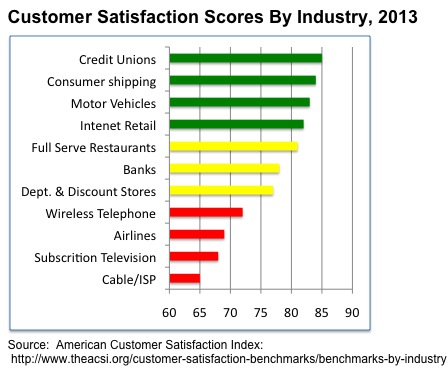
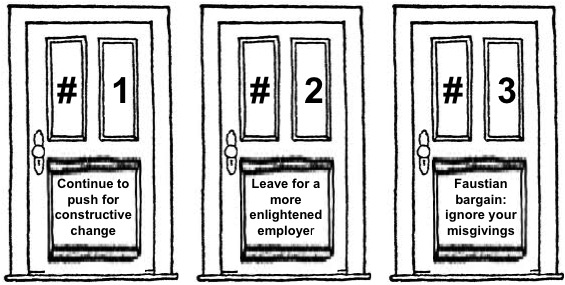


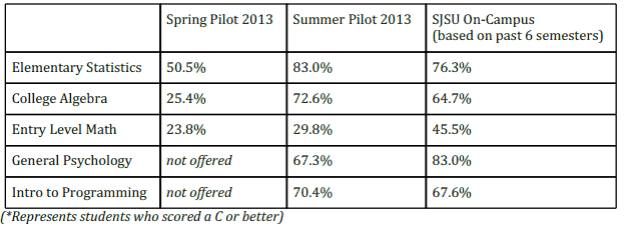
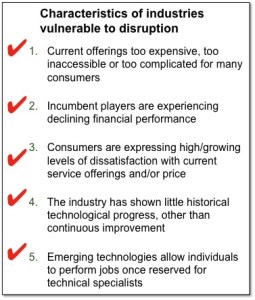
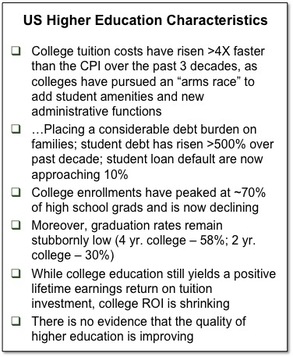
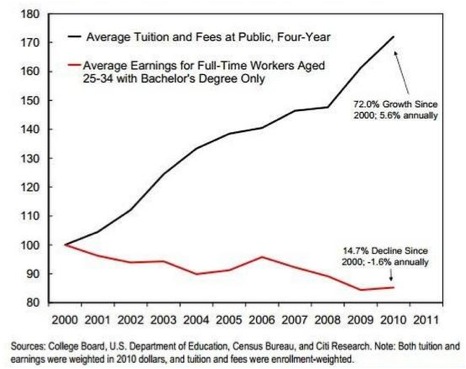

 RSS Feed
RSS Feed